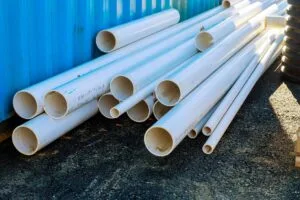Piping Material Choices: The Kansas City Homeowner’s Guide
When it comes to building or renovating a home, choosing the right piping material for your plumbing system plays a crucial role in ensuring efficiency, durability, and overall quality. With numerous options available on the market, Kansas City homeowners need to understand the benefits, drawbacks, and applications of each material. Doing so will help you make an informed decision tailored to your specific needs and preferences.
Copper Piping: A Timeless Classic
Copper has been a tried-and-true option for residential plumbing systems for decades. Despite being one of the more expensive materials, copper pipes boast numerous advantages, making them a popular choice for many Kansas City homeowners.
Pros:
- Durability: Copper pipes are resistant to corrosion and can withstand extreme temperature changes. With proper installation and maintenance, they can last for 50 years or more.
- Bacteria and Heat Resistance: Copper’s natural antibacterial properties help prevent bacterial growth within the pipes. Additionally, the material can hold up well under high water temperatures.
- Recyclability: Copper is a recyclable material, making it an eco-friendly choice for homeowners concerned about environmental impact.
Cons:
- Cost: Copper pipes can be expensive to purchase and install, which may be a deterrent for homeowners on a tight budget.
- Vulnerability to Acidic Water: In areas with acidic water, copper pipes can corrode over time, potentially leading to leaks.
PEX Piping: Flexibility And Affordability
Cross-linked polyethylene (PEX) piping is a relatively newer material in the residential plumbing industry. Offering flexibility and lower costs compared to copper, PEX is an attractive option for budget-conscious homeowners.
Pros:
- Cost Savings: PEX pipes are generally cheaper to purchase and install than copper, offering homeowners significant savings.
- Easy Installation: The flexibility of PEX pipes allows for quicker and simpler installation with fewer connections and fittings required.
- Energy Efficiency: PEX piping has better heat insulation than copper, reducing heat loss and contributing to overall energy efficiency.
Cons:
- Limited Exposure to Sunlight: PEX pipes can deteriorate when exposed to direct sunlight, which can be a concern if your plumbing system has any outdoor components.
- Not Suitable for Recirculating Systems: PEX is not recommended for hot water recirculating systems due to its lower resistance to high temperatures compared to copper.
PVC And CPVC Pipes: The Versatile Plastic Choice
Polyvinyl chloride (PVC) and chlorinated polyvinyl chloride (CPVC) are common plastic materials used in residential plumbing systems. The main difference between them is that CPVC is manufactured to withstand higher temperatures than PVC, making it suitable for hot water applications.
Pros:
- Cost-Effective: Both PVC and CPVC pipes are more affordable than copper or PEX, offering homeowners a budget-friendly option.
- Corrosion Resistance: PVC and CPVC pipes do not corrode, making them a durable choice, particularly in areas with acidic water.
- Lightweight and Easy to Install: These plastic pipes are lighter and easier to cut than metal alternatives, simplifying the installation process.
Cons:
- Chemical Sensitivity: PVC and CPVC pipes can be sensitive to certain chemicals and solvents, which may limit their suitability for specific applications.
- Not Suitable for All Water Temperatures: PVC pipes are generally not recommended for hot water applications, while CPVC can handle higher temperatures, though it may not be as heat-resistant as copper or PEX.
Galvanized Steel: Durable But Prone To Corrosion
Galvanized steel pipes were a popular choice for plumbing systems before the advent of copper pipes. While they are quite durable, there are some significant drawbacks to using these pipes in modern homes.
Pros:
- Strength and Durability: Galvanized steel pipes are strong and can potentially last for decades when properly maintained.
- High Weight Capacity: These pipes can support a high amount of weight, making them a suitable choice for supporting fixtures and appliances.
Cons:
- Corrosion Risk: Over time, galvanized steel pipes can corrode from the inside out, resulting in the need for replacement. This can also lead to reduced water pressure and potential health concerns due to rust or other contaminants in the water.
- Limited Compatibility: Galvanized steel pipes are generally not compatible with newer piping materials like PEX or copper, complicating the process of integrating new pipes into existing systems.
The Importance Of Professional Installation And Maintenance
Regardless of the piping material you choose for your Kansas City home, the quality of installation is crucial for effective performance and longevity. Hiring Climate Control Heating, Cooling & Plumbing ensures that your plumbing system is installed correctly, according to code, and is backed by a warranty.
In addition to professional installation, routine maintenance is essential for any plumbing system. Regular inspections can help identify potential issues early on, preventing costly repairs or replacements down the line.
Expert Plumbing Solutions With Climate Control Heating, Cooling & Plumbing
Each piping material offers its own set of advantages and drawbacks, reflecting the diverse needs of Kansas City homeowners. By understanding the characteristics and applications of each material, you can make an informed decision that best suits your budget, home requirements, and personal preferences.
Trust Climate Control Heating, Cooling & Plumbing for all your plumbing needs, from material selection to installation and maintenance. Our experienced team is dedicated to providing top-quality services tailored to your specific needs. Contact the trusted HVAC contractor in Kansas City, MO, today to schedule a consultation with our experts!





